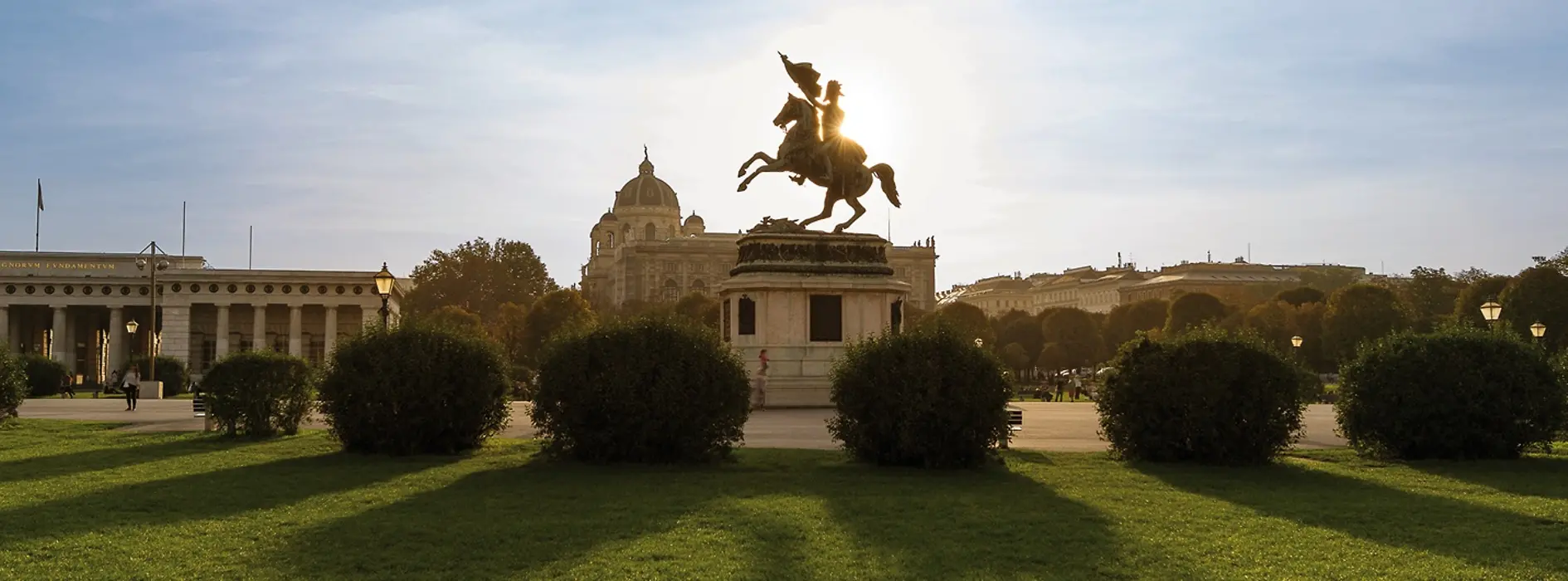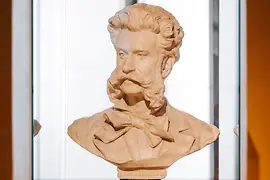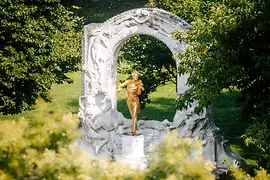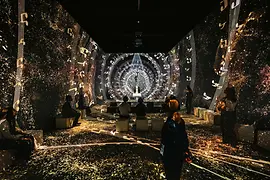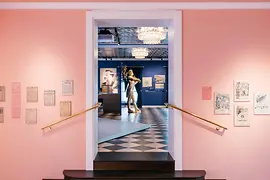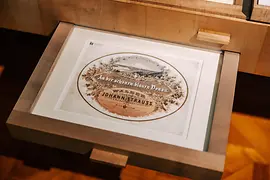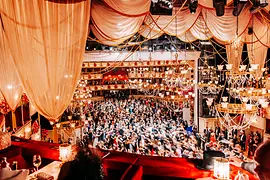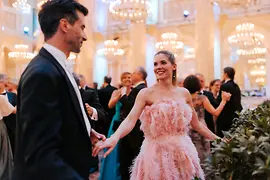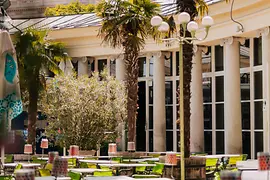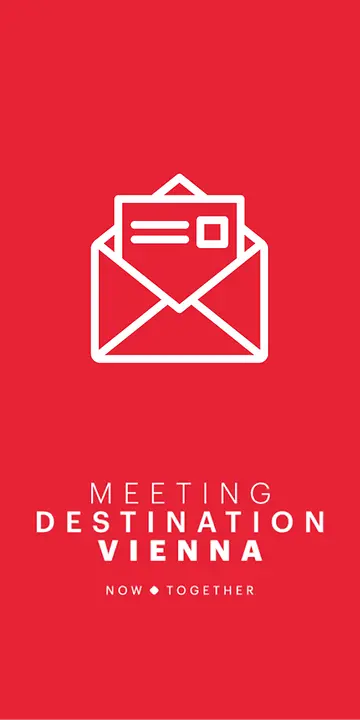Johann Strauss 2025: Meetings with the King of Waltz
Strauss is an international superstar: His waltzes reflect the Viennese attitude to life, and "Die Fledermaus" is the most famous operetta of all. 50 million TV viewers glide into the new year to the strains of Strauss' music at the Vienna Philharmonic's New Year's Concert. The music of the Strauss dynasty is the DNA of the flourishing Viennese ball season. A visit to the ball is partying the Viennese way.
Strauss and Vienna: king and queen
The Strauss anniversary year in 2025 has been given the motto King of Waltz. Queen of Music. The queen of the Waltz King Johann Strauss is Vienna, the world capital of music. It was here that geniuses such as Mozart, Beethoven and Strauss himself were able to unleash their full creativity. Today, the city's cultural scene is buzzing. Vienna’s stages attract 10,000 visitors a night. Vienna has also made a name for itself as an internationally acclaimed meeting destination and welcomes thousands of conference participants every year.
Strauss-themed social programs for meetings
The Strauss theme and everything that goes with it also offers numerous opportunities for meetings and social programs.
Viennese waltz lessons
The Elmayer Dance School teaches the basics of the Viennese waltz in exclusive waltz lessons. Don’t just listen to Strauss' Danube Waltz - you can dance to it too. Read more!
Music capital
A guided tour of the city’s most famous musical establishments - the Vienna State Opera and the Musikverein, where Strauss conducted - offers an insight into what goes on backstage. Here you can find more information.
Strauss-themed events
The whole of Vienna - 69 locations across all 23 of Vienna's districts - will be the stage for a packed Strauss-themed program in the anniversary year, which is also open to meeting participants. The year-round festival includes 65 productions from ten genres, ranging from classical Strauss concerts and operettas to contemporary performance art.
Here's a tip for you: Several exhibitions and museums (almost all of which are open indefinitely) approach Strauss from different angles:
- Johann Strauss - The Exhibition (December 4, 2024 - June 23, 2025) - a major classical Strauss exhibition at the Theater Museum
- Johann Strauss. New Dimensions: new immersive and high-tech multimedia experience
- House of Strauss: Strauss center with a museum and concerts. Historical Strauss performance venue.
- Strauss' apartment on Praterstraße: preserved in its original design!
- House of Music: conduct the Danube Waltz with the "Virtual Conductor"
Strauss venues
Only in Vienna can you find meeting venues that were also historical performance venues once frequented by the Waltz King Johann Strauss:
HOFBURG Vienna
The halls of the Hofburg (Ceremonial hall and apartments) were used for balls hosted by the imperial family. Johann Strauss II conducted the ball music and held the honorary title of "k. k. Hofballmusikdirektor" (meaning Imperial Court Ball Music Director) from 1863 to 1871. He composed and dedicated works for several balls in the Redoutensaal. Today, the HOFBURG Vienna is one of three congress centers in Vienna and welcomes up to 350 events every year. There is space for up to 4,900 people in this unique setting.
House of Strauss at Casino Zögernitz
The House of Strauss presents a multimedia Strauss museum at the revitalized original Strauss venue: Casino Zögernitz. Johann Strauss used to perform in the 350 m² Strauss Hall, while today his music can be heard in concerts - and the hall can also be hired for events for up to 380 people. This is also the headquarters of Strauss research. Famed chef Stefan Glantschnig offers the best Viennese cuisine at the Casino Kulinarium.
Palais Coburg
Johann Strauss I and his sons created 19 dedicatory compositions for members of the House of Saxe-Coburg and Gotha, who acted as the family’s patrons. One such operetta was dedicated by Johann Strauss II to Duke Ernst II of Saxe-Coburg. There is a permanent Johann Strauss exhibition at Palais Coburg, and one of the many rooms and salons is the magnificent 120 m² Johann Strauss Concert Hall. Today, the state rooms can accommodate meetings for up to 250 people.
Sophiensaal
From 1848 onwards, the main swimming hall of the Sophienbad pool was used as a dance hall in winter, called the Sophiensaal - it soon became one of the most popular ballrooms in Vienna. Masked balls, balls for engineers, doctors and lawyers and those of the Concordia writers' association were held there, accompanied by premieres by Johann, Josef and Eduard Strauss. Today, the rooms at the Sofiensaal are a stunning meeting location for up to 700 people.
Hotel Sans Souci Wien
The spot where the Hotel Sans Souci Wien stands today was once the site of the "Zum großen Zeisig" inn. Johann Strauss premiered the Tritsch-Tratsch-Polka op. 214 here. A painting commemorates this event. The Sans Souci meeting room can accommodate up to 50 people.
Parkhotel Schönbrunn
Viennese society used to come and dance in the Dommayers Casino where the Parkhotel Schönbrunn now stands. Johann Strauss II celebrated his highly successful debut as a composer and conductor of his own orchestra here in 1844 - against his father's wishes. The press ran the headline: "Good night Lanner! Good evening Strauss Vater! Good morning Strauss Sohn!" Today, the Austria Trend Hotel Schönbrunn offers around 300 rooms and several meeting rooms, including the ballroom that can accommodate up to 469 people.
More Strauss Locations
Strauss is omnipresent in Vienna - sometimes more obviously, sometimes less. The Volksgarten was and still is a place of entertainment for the people of Vienna: Strauss was the director of music there. It was here, on March 10, 1867, that he played the orchestral version of the Danube Waltz with his orchestra for the first time. People are still dancing there today - in the Volksgarten club disco.
The ballroom at Vienna City Hall was opened in 1890 with the first ball of the City of Vienna, with Emperor Franz Joseph in attendance. Johann Strauss composed his waltz Rathausball-Tänze op. 438 for the occasion.
The Danube gives its name to the world's most famous waltz: "An der schönen blauen Donau" by Johann Strauss, known as the Danube Waltz for short - which is the unofficial anthem of Vienna. The Danube characterizes Vienna as a liveable city and green (meeting) destination.
Around a dozen Strauss locations in Vienna can be explored as part of the Johann Strauss audio walk in the Vienna Tourist Board's (free!) city guide app, ivie.
All the information about Johann Strauss 2025:
www.strauss.wien.info
